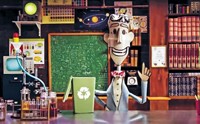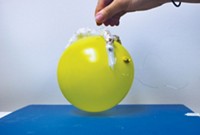Advertisement
Grab your lab coat. Let's get started
Welcome!
Welcome!
Create an account below to get 6 C&EN articles per month, receive newsletters and more - all free.
It seems this is your first time logging in online. Please enter the following information to continue.
As an ACS member you automatically get access to this site. All we need is few more details to create your reading experience.
Not you? Sign in with a different account.
Not you? Sign in with a different account.
ERROR 1
ERROR 1
ERROR 2
ERROR 2
ERROR 2
ERROR 2
ERROR 2
Password and Confirm password must match.
If you have an ACS member number, please enter it here so we can link this account to your membership. (optional)
ERROR 2
ACS values your privacy. By submitting your information, you are gaining access to C&EN and subscribing to our weekly newsletter. We use the information you provide to make your reading experience better, and we will never sell your data to third party members.
Biomaterials
Newscripts
Snack power: Popcorn-driven robots and spontaneously combusting tortilla chips
by Corinna Wu
August 5, 2018
| A version of this story appeared in
Volume 96, Issue 32
Robots a-poppin’

Part of the fun of eating popcorn is watching it pop. And that holds true even when the popcorn isn’t meant for munching: Engineers have now harnessed popcorn’s explosive energy to drive robots.
Steven Ceron, a mechanical engineering graduate student at Cornell University, presented a paper on the concept at the IEEE International Conference on Robotics & Automation in May. His adviser, Kirstin H. Petersen, whose lab works on applications for large collectives of soft robots, says the movie theater snack offers a way to make robots transform from soft to relatively rigid, without the need for expensive and bulky air pumps. Popcorn can simply be heated—with hot air, microwaves, or even a voltage across a wire.
Using Amish Country brand popcorn—because it’s free of additives—the researchers designed and built four different popcorn-driven actuators. One, for example, used a coiled wire to heat strings of kernels placed inside stretchy silicone rubber sleeves. As the kernels popped, the sleeves bent, forming a three-pronged gripper that could gently pick up a balloon. Another consisted of recycled popcorn bags folded origami-style and filled with kernels. After being popped in a microwave, the expanded actuator could support the weight of a 4.1-kg kettlebell.

Popcorn pops only once, so it would work best for robotic actuators that need just one rapid, high-force deployment, Ceron says. The researchers are also looking into several synthetic materials, such as two-component fluids that harden and expand upon mixture. Still, natural popcorn has a lot going for it: It’s inexpensive, biodegradable, and readily available—not to mention delicious.

Combustible comestibles
Popcorn isn’t the only snack food that’s been in the news recently. In July, firefighters were called to put out a blaze caused by “spontaneous combustion of tortilla chips,” according to a Facebook post by the Austin (Texas) Fire Department. Michelle Tanzola, public information and marketing manager for the department, explains that a local tortilla chip factory had recently moved to a new waste processing method that involved pulverizing the chips into a fine powder and storing them in cardboard boxes outside. The summer weather, combined with oil from the chips, created enough heat to ignite the powder.
Fortunately, no one was hurt in the fire, and nothing was damaged. The fire department also posted this tongue-in-cheek lament about the incident: “Tortilla chips are big business around these parts. We take them seriously, as they are responsible for holding all manner of very important things—like queso, salsa, nachos, and various other sundry items that are critical to a Texan’s everyday life and well-being.” Newscripts agrees; the only burning sensation a tortilla chip ought to experience is that from a spicy dip.
Corinna Wu wrote this week’s column. Please send comments and suggestions to newscripts@acs.org.





Join the conversation
Contact the reporter
Submit a Letter to the Editor for publication
Engage with us on Twitter